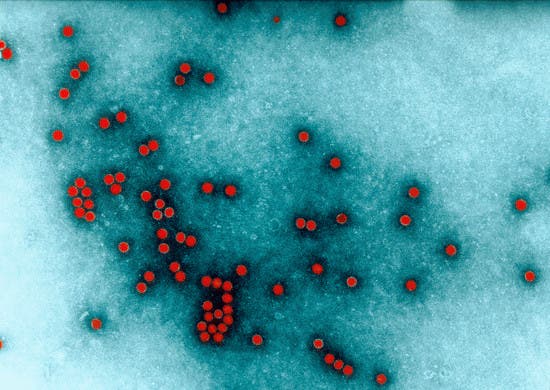Vaccination has been highly successful in reducing the prevalence of poliomyelitis. Routine vaccination has helped reduce the number of cases by more than 99% in 30 years. However, epidemics are still occurring, and we’re still miles away from eradicating the virus. Researchers have now identified the exact strain responsible for recent outbreaks and showed that the mutations which it underwent were so powerful that the strain has actually become immune to vaccines.
Poliomyelitis, often called polio or infantile paralysis, is a infectious disease caused by the poliovirus. 90-95% of all cases have no symptoms at all, and even when symptoms do occur, they are generally pretty mild. However, the effects of the virus are not mild at all. In 0.5% percent of the cases, there is muscle weakness resulting in an inability to move. This happens pretty fast, even in less than a day. While some recover, many remain crippled and on average, about 2% to 5% of children and 15% to 30% of adults don’t survive the disease.
Naturally, people wanted to find a cure for this horrendous disease. Poliomyelitis has existed for thousands of years, with depictions of the disease in ancient art. Egyptian paintings and carvings depict otherwise healthy people with withered limbs, and children walking with canes at a young age. It was scientifically described for the first time in 1789. In 1977 there were 254,000 persons living in the United States who had been paralyzed by polio; at the time, the estimated population was about 180 million people, so about 0.15% of all Americans suffered from polio.
In modern times, polio seemed to fight an uphill battle, with just 183 cases of polio in Somalia being reported in 2013, 14 in Kenya and eight cases in the Somali Region of Ethiopia. Overall, we went from an estimated 350,000 cases in 1988 to 650 reported cases in 2011. But we’ve still witnessed recent outbreaks, and according to recent research, we still have a lot to worry.
Genetic sequencing of polio virus from recent outbreaks showed two previously unknown mutations of the proteins that form the “shell” (capsid) of the virus. These mutations changed the virus so much that vaccines are actually ineffective against the strain.
The researchers tested the resistance of the virus on 60 blood samples from vaccinated people, including volunteers living in neighbouring Gabon, where part of the research team was based, and German medical students.
At a time when polio eradication was supposed to enter its final stage, this clearly comes as a shock, and shows that we have yet to defeat the virus. The researchers are calling for better clinical and environmental monitoring to completely wipe out the scourge of polio.
Journal Reference: J. F. Drexler, G. Grard, A. N. Lukashev, L. I. Kozlovskaya, S. Bottcher, G. Uslu, J. Reimerink, A. P. Gmyl, R. Taty-Taty, S. E. Lekana-Douki, D. Nkoghe, A. M. Eis-Hubinger, S. Diedrich, M. Koopmans, E. M. Leroy, C. Drosten. Robustness against serum neutralization of a poliovirus type 1 from a lethal epidemic of poliomyelitis in the Republic of Congo in 2010. Proceedings of the National Academy of Sciences, 2014; 111 (35): 12889 DOI: 10.1073/pnas.1323502111










